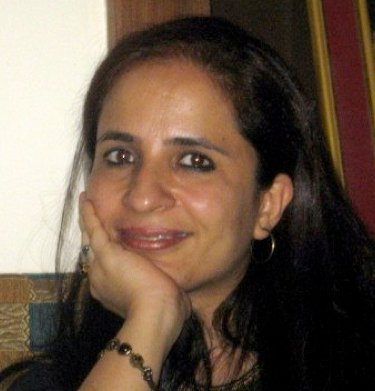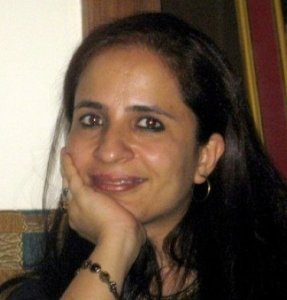CIRCL perspectives offer a window into the different worlds of various stakeholders in the cyberlearning community — what drives their work, what they need to be successful, and what they think the community should be doing. Share your perspective.
Shuchi Grover is a Senior Research Scientist at the Center for Technology in Learning at SRI International.
How did you get started in cyberlearning?
My journey into cyberlearning started with my Masters’ thesis in Computer Science (about 2 decades ago). It involved developing software tools for students of music that used digital repositories for score sheets and music files. This was my first brush with using technology to enrich the learning process and I became interested in how we could leverage technology to help students be more engaged. Later, as a student in the Technology, Innovation and Education Masters program at the Harvard Graduate School of Education, I began to truly see the potential of using technology to enhance learning in different contexts. I worked as a researcher to study teachers’ communication in asynchronous discussions on online platforms and as a teacher-facilitator on Harvard’s online professional development platform for teachers. Through volunteering on research projects that combined crafts and robotics to create electronic artifacts I began to see how computing and ‘making’ with technology could be engaging for both girls and boys. I continued to work with children in after-school programs that gave them computationally-rich experiences with robotics, programming and digital storytelling.
What are you working on now?
Even as far back as 2004, during my robotics sessions with kids, I found myself consciously trying help them learn to think like computer scientists– to give children a deeper sense of what it means to program a robot, and how they should go about thinking of how to construct one. ‘Computational Thinking’ became a topic I have engaged deeply with this past decade or so. It was also the topic of my dissertation during my PhD that I recently completed in Learning Sciences and Technology Design at Stanford. I developed a 6-week course on the Stanford OpenEdX online platform for middle school students to introduce them to computing. It gives students a sense of how pervasive computing is today, and also teaches them foundational computing concepts in a way that helps them engage in algorithmic thinking more deeply. I believe that learning to program is an important skill to have, but much more meaningful is the ability to think logically, algorithmically, recognize patterns, work with abstractions and understand how computation can help solve a problem. The narrow focus on teaching students to snap some blocks together to make a cool program (to the exclusion of that deeper learning) sometimes seems troubling to me. Programming is cool and engaging and fun, but kids need to also understand the process more deeply, and learn about how computing connects to their lives, what they can do with computing––the more human aspects of learning to use a computer as a tool they can create with. It’s amazing how naïve they are about the technology that they use so extensively in their day-to-day lives.
What should the cyberlearning community be doing?
Finding ways of connecting initiatives going on in different areas would benefit the community. I would like to see a way to coordinate and leverage the research from different projects. In the context of the work I am involved in, I find that CT projects could benefit from other areas of activity in the cyberlearning community– science and math ed projects, learning through games, and big data learning analytics initiatives. Computational science shares synergies with science and math. There is tremendous potential in enriching math and science learning through the use of computation, and conversely, students could learn computational thinking and programming in context. In science especially, there is a rich opportunity in light of the Next Generation Science Standards. CS education research could also leverage learning from math and science education cyberlearning efforts to understand how to assess collaborative work and create authentic assessments. Games are another great avenue for helping children to build computational competencies. There are many aspects of computational thinking that children naturally engage with while playing games. These can be leveraged for more conscious CT learning. How to embed CT assessments cleverly in games might be a cool area to explore. We could build a much richer context together if we leverage the infrastructure that already exists to promote more collaboration among different projects. It could be great to give projects an incentive to include such interdisciplinary components in their work.
The community also has the potential to use large data analysis initiatives to benefit computational learning efforts. Using data for analyzing how students program in introductory programming environments could help better understand targets of conceptual difficulty, and even non-cognitive factors such as task persistence. This could help us figure out how best to structure or sequence learning. Analyzing different student learning pathways, for example, would help us learn how we can teach concepts better, create appropriate learning progressions and accommodate all learners. There are a lot of questions to be answered, and I believe that looking at this data could help us start answering these questions. There are some efforts already underway––but it would be great to see more.


